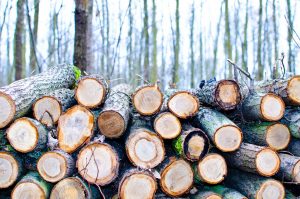Richard Allen, sales director at specialist timber panel manufacturer MEDITE SMARTPLY, explores how timber frame construction could help us rise to sustainability challenges
The recent coronavirus crisis has slowed us down in our sustainability efforts this year. But surely this is a renewed incentive to make every effort to increase the sustainability of our construction projects going forward? With about 45% of UK CO2 emissions currently coming from construction, we can only make positive changes!
In the UK and Ireland, building standards work hard to embed sustainability – and the standards are steadily getting higher. As the operational performance of buildings increases, the environmental impact of the materials used in their construction become more significant. Everything including the use of raw materials, transportation, manufacturing resources and emissions generated must be considered.
Perhaps in response to this, but also thanks to an overall society steadily growing in environmental conscience, recent years have seen a marked resurgence in the use of timber frame construction all over the UK. In Scotland, for example, timber frame construction already accounts for around 75% of all new homes.
Sustainable construction
When properly managed, timber is arguably the only 100% sustainable construction material, simply because with sustainable forestry practices there are at least as many new trees planted as harvested; the first step to greener construction products and greener construction overall.
From a CO2 saving perspective, a typical timber frame house saves on average four tonnes of CO2 compared with an equivalent masonry house. An important green credential for timber products is their embodied carbon. As long as wood does not burn or rot, the carbon within it never leaves, so a sustainably built timber frame house can be a significant carbon store.
MEDITE SMARTPLY has been a pioneer of the sustainable timber industry in Europe, with all specialised timber panels produced essentially as by-products of sustainable forest management.
However, the main focus in construction sustainability at present is on the impact of the building when it is in use. So much focus has been lavished on the innovation of this sustainable timber into products that are able to actively save contractors, developers and eventually building owners energy emissions and money.
Higher-specification timber frame housing is in fact easier to produce. It’s possible to create thicker and better insulated walls with timber frame, while the level of innovation in terms of comfort and efficiency in timber frame is improving every day. For example, SMARTPLY MAX is a structural OSB3 panel manufactured with no added formaldehyde for utmost safety to both the installing contractor and the building occupant and has even been used as a decorative element within the interiors of buildings.
Timber frame and offsite construction are also seemingly natural partners on the road to more sustainable building.
Innovative timber products
Innovations in the scale of timber products have allowed products, such as SMARTPLY ULTIMA OSB4 and SMARTPLY MAX FR (fire rated) OSB3, to be manufactured in panels of up to 2.8m wide and up to 7.5m long, and in the case of SMARTPLY ULTIMA, up to a maximum thickness of 40mm. This makes them ideal for offsite construction, whereby entire sides of an apartment, home or school can be sheathed offsite and then craned into place, with much reduced disruption to the surrounding environment and much less waste.
It’s been recognised that the waste generated on traditional method construction sites is at least 10% of all materials delivered, due to damage, loss and over-ordering. This could actually be up to 30% of the total weight of building materials delivered to a building site in some cases. In the case of over-ordering, materials could very well end up in landfill still in their packaging.
Timber frame construction creates overall less waste in its production than either brick, plastic, concrete or steel; however, by combining this with offsite methods, the waste savings have even greater potential as sections of buildings are produced to precise requirements, only using exactly what is needed.
Of course, alongside the positive sustainability credentials of timber frame construction, there is also the cost.
It costs around 5% less to build a timber frame house compared to using traditional masonry. This may not seem like a lot, but over large development projects, 5% can be a significant amount of money – even more so after a globally halting event such as the recent coronavirus pandemic. The build time is also around 30% faster, meaning savings on labour and a much quicker return on investments for developers.
We have all the knowledge and all the products to be able to move forward in construction again, with sustainability a priority. Let’s do the right thing!
For more on MEDITE SMARTPLY and the solutions it can offer for timber frame construction, visit the website: https://mdfosb.com/en/
Richard Allen
Sales director – GB
Tel: +44 (0)7876 753212
Please note: this is a commercial profile.












![[Video] Fireco: 80 new fire doors required for residential flats in London](https://www.pbctoday.co.uk/news/wp-content/uploads/2025/04/2024-06-01-Lords-view-one_1200x750_004-218x150.webp)


